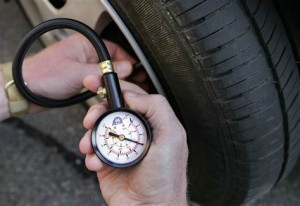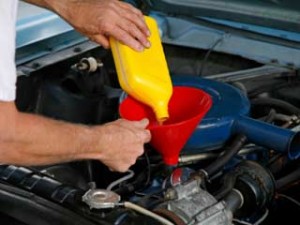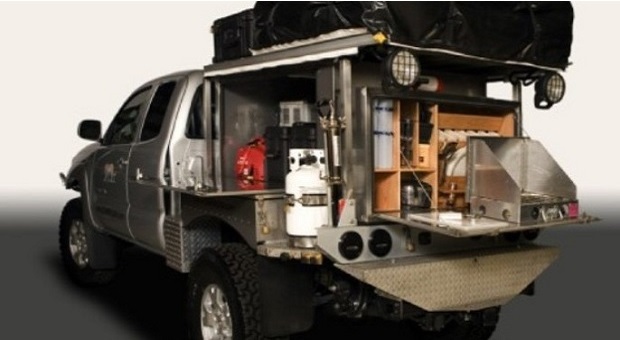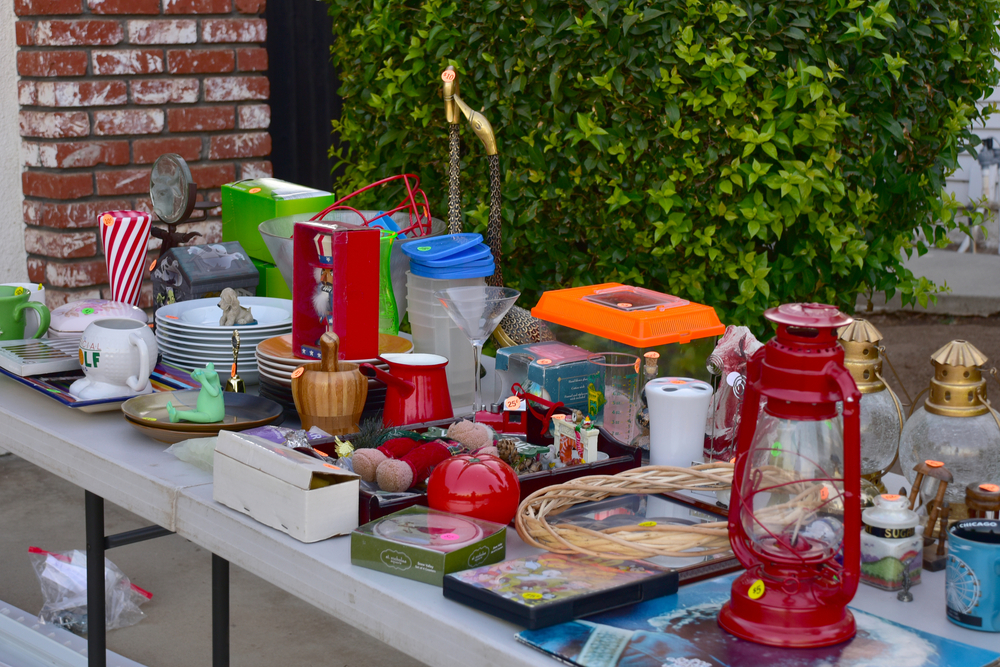If you’re the type of individual who plans to get out of dodge when SHTF, chances are you’ve given some thought as to how you’ll get there.
It’s inevitable that major roads will be congested with traffic as others evacuate the area. Yet attempting to bypass the traffic on foot poses just as many obstacles. In doing so you’re more likely to get lost, encounter danger, and fail to cover much ground. For many preppers, the bug out vehicle (BOV) is the answer to these problems.
In an earlier post, we discussed a few tips for low consumption driving and how things like vehicle weight, acceleration control, tire pressure, and fuel types play an important role in your vehicle ability to get you to safety. We noted that there is no such thing as a perfect bug out vehicle. However, things like speed, protection, fuel efficiency, and off-road capabilities are commonly sought components in a reliable BOV.
This article will continue on the topic of bugging out in a vehicle and discuss other ways to keep your BOV ready to go.
Bug-Out Vehicle Check List
Whether your vehicle is your everyday commuter car or an all-terrain camper truck, your mission is the same when SHTF. You want to get your family into your vehicle as quickly as possible and get on the road. You also want that vehicle to have everything you need to keep you alive for a few days on the road until you reach your shelter or find safety.
There are two separate components to BOV prepping that you must factor in when getting out of dodge:
- your vehicle is well maintained and mechanically suited to drive long distances,
- your vehicle is loaded with the various supplies and gears you’ll need to survive on and off the road.
Keep in mind, even those set on sheltering in place when SHTF cannot hedge their bets on a single preparedness plan. Every prepper knows that being prepared means having the measures in place to hunker down AND bug out and the ability to do either as soon as disaster strikes.
You don’t necessarily have to devote a substantial portion of your prepping budget into your vehicle, especially if your plan is to stay put. A surprising number of minor and inexpensive tasks can be what makes the difference between a roadworthy BOV and a worthless hunk of steel on wheels.
Whether or not you plan on hunkering down or bugging out, if there’s a vehicle in your driveway you should consider the following tips to keep it ready.

Tires – The idea behind the bug out route is that your vehicle’s four wheels will get you much further than your two legs. If you don’t have quality, well-inflated tires with good traction, you won’t get very far when SHTF.
Inspect the tread and pressure levels of your tires routinely, especially in the winter months. You should also have your tires rotated and your wheels at least every 5,000 miles to maintain their condition.
Additionally, you should plan on keeping a complete spare tire in addition to the donut that comes with your car. If space inside or above your car allows or you plan on bugging out over an extended route of rough terrain, you may consider keeping a full set of spare tires on board your BOV.
Battery – Your car won’t start without a battery. It’s also bound to fail sooner than later if your battery is old and worn.
It’s recommended that you replace your battery about every four years, as they tend to lose their acidic charge at about that time. Some batteries last much longer and some give out much sooner, it’s up to you to watch for signs of decline.
It’s not a bad idea to keep an extra new battery on board your BOV, as you never know if there will be other (friendly) survivors on the road willing to pull over and give you a jumpstart.
Fluids – Your vehicle’s engine fluids are one of the easiest things to regulate, though many people still ignore them.
Your engine oil and oil filter should be changed regularly, and an extra quart or two should be kept on board in case of a leak. Your transmission fluid, brake fluid, power steering fluid, engine coolant, and windshield wiper fluid should also be filled and extras of each kept on board (if space allows). Make sure each of these tanks are also drained and filled with fresh fluids regularly.

Gas – A BOV without a full tank of gas is not a BOV. If you have a vehicle designed to get you out of dodge, you should make sure it’s ALWAYS filled with gas. That means every time you take it out for errands or run practice bug out drills you should fill the tank on your return trip home.
Also keep two full canisters of fresh gasoline at home to top your tank off last minute or while on the road. If you have a bug out shelter, make sure it too has a supply of fresh gasoline for refilling your tank upon arrival.
Also consider carrying a few quarts of fuel additives to freshen any questionable sources you may come across on your route.
Radio – Aside from the AM/FM radio in your car, which may or may not broadcast emergency information during a disaster, you should have a back up communications device in your car.
This may already be part of your bug out bag that you carry in your vehicle, but if not you should consider an alternate means of communication to your cell phone and car stereo.
For more on this, check out our article all about communicating after a disaster.
Tools – In the event of a breakdown, your hands alone won’t do you much good. Your BOV should be stocked with a tool kit that contains (at the very least) a set of screwdrivers, hammer, pliers, wrenches, socket set, utility blade, pry bar, and a roll each of electrical and duct tape.
Even if you’re no mechanic, these tools could save your life and that of your vehicle.
In a follow-up post, we will look deeper into the gear aspect of BOV prepping. The above pointers are mostly oriented towards keeping your vehicle itself maintained.
This is important above all, as your BOV is only useful if it can successfully get you and your family to safety without breaking down. From there, you’ll find some insurance knowing you have all the necessary equipment and supplies on board to survive on the road.
This article has been written by Cody Griffin for Survivopedia.








































































96% of 2013 vehicles and all of 2014 vehicles have black boxes that can be tracked and SHUT DOWN for satellites. Any vehicles with electronic’s can be fried by EMP.
Suggest pre emission pre electronic (includes distributor) vehicles that are 4 X 4’s.
I haven’t gotten around to a truck that won’t be harmed by an EMP yet all my electronic gear is safe though. Could some one make a alis of the year amke and modle of trucks that would do the trick? Thanks.
Mitch
We have a 1972 Ford F-250 (3/4 ton) with manual tranny & 4 X 4. Easiest way to tell, pop the hood look at the distributor, if it has points and condenser = no electronics. Check cylinder pressure, if low, rebuild engine. Add AMSOIL for longevity. The factory Hi-boy is my favorite. Or older Dodge Power Wagon.
In addition buy extra points/condenser/fan belt/fuelpump. Put extra battery in small metal garbage can, surround with cardboard, then put in large metal garbage can. Should protect it from EMP. Add extra fuel tank or 2. Put a camper on it and stock up on freeze dried food/water. Only 2 freeze dried foods are NON-GMO. Legacy and Thrive. It’s going to get ugly sooner than later.
Blessings,
Tom
one thing I have not seen mentioned for your Bug out Vehicle is a good strong set of wire cutters. Because if any of your Bug out routes get plugged or washed out you will need them to get through the fence on the side of most roads.
About the Bug out vehicle at the beginning of this article, That is a very nice set up, and I wish I could afford one like it. So We have a Bug out vehicle that meets our needs better, and not to expensive. It is good on fuel, highly maneuverable, reasonably fast, 4×4 light, and can set up and take down in less than 2 minuets It is already packed and plugs into any 2 inch trailer receiver hitch! I will post a picture if i am permitted to. I have contacted Survivopeda for permission. Good luck and God Bless, Bob.
Bob Taylor’s idea (obviously a prepared trailer) is great.
Hi buddy! Thank you for your comment, but our bugout vehicle is not a trailer, sorry about the misunderstanding, but what we have is a all terrain luggage rack that automatically folds up going through ditches, over rocks, washouts, and levels back out on the level again. The sides fold down to make a platform big enough for a three man pop up tent and a pop up privacy tent with a potty and chemically treated catch bag, also a shower, and it can be set up and taken down in less than 2 minutes. I wish I could post a picture but i don’t have a reply to my request to post a picture. this rack loaded will go anywhere a 4×4 will go!
You sound like you have a good handle on what you’re doing. If you don’t mind, I’d be curious to know if you’d be interested in sharing some of your knowledge with me. I’m a little new to all of this and need to catch up quick.!
Cheers…
Howard
would you mind sending me the pic or pics you mentioned, directly to my email?
[email protected]
Thx much…
Howard
Useful post!!I found all these tips practical that can help in extending the life of automobile and keep car maintenance expenses to a minimum. Battery maintenance is important as without the battery, we are not able to even start our car.Therefore it is important to keep the battery in good working condition by simply cleaning and clearing all its components.
having a pair of women’s panty hose are good as a backup for your broken fan belt in your vehicle, we kept a spare pair in our tackle box for keeping bait on our hooks and found it to be useful as a spare fan-belt-backup item, it got us to a gas station so I could buy a belt for my vehicle
Having a pre-planned destination for bugging out trumps a 4 wheel truck that costs 30-40K. I have a well maintained minivan that both seats can be removed within a few minutes all my vitals for bugging out are in 5-gal sealed buckets or homemade containers. Includes 60 days of food and 30 days of water with “Life Straws” as backups for water. And yes, I have a destination that is both remote and with a spring-fed water supply.
Great starting article. I’m curious to know. Do you have recommended models or manufacturers for a BOV.? I myself would currently be utilizing a 1995 Dodge Ram 1500- 4WD. My real question is, why would you recommend having on board besides the battery and fluids currently mentioned. I was considering some possible electinics like the computer on board. Or maybe a replacement ignition array, etc…I’m a fish out of water here, plus I would be doing this currently on a shoe-string budget, currently being between jobs right now. I have medical covered, traveling food plus emergency survival for 30days by way of bars and water packets. Spare terrain proper clothing, and of course hand tools and weapons for bivouacing and group protection. I guess why I’m asking is, how in-depth do you go or will you go by request.?
Again great article and look forward to viewing your next ones…
Cheers..
HK